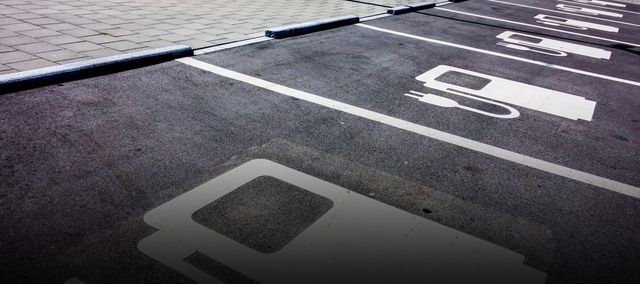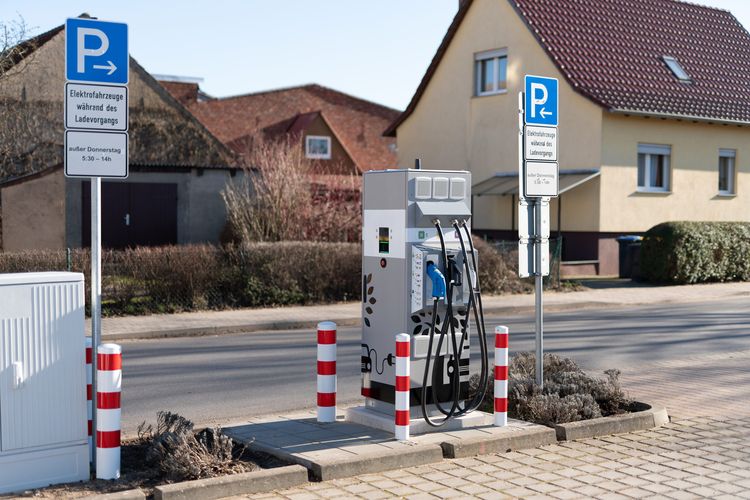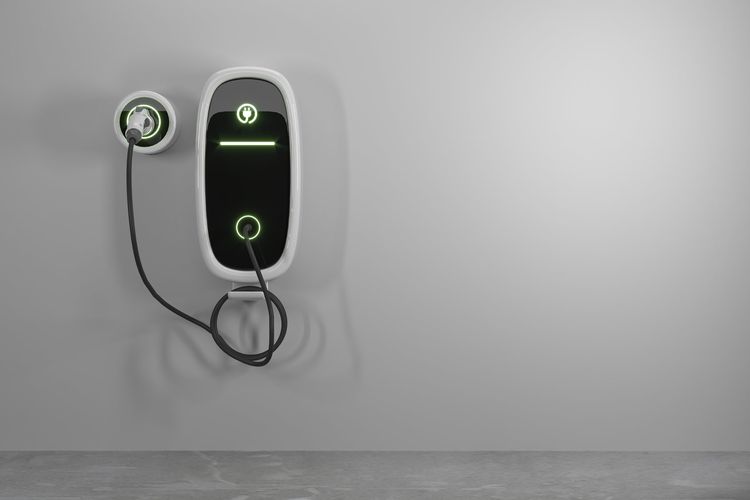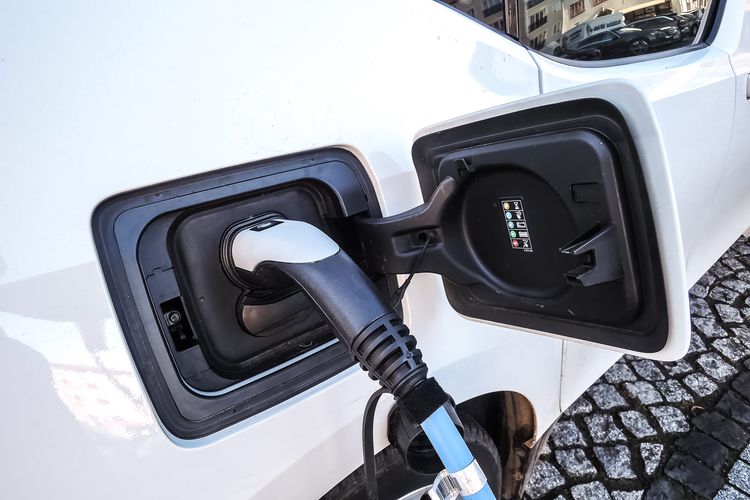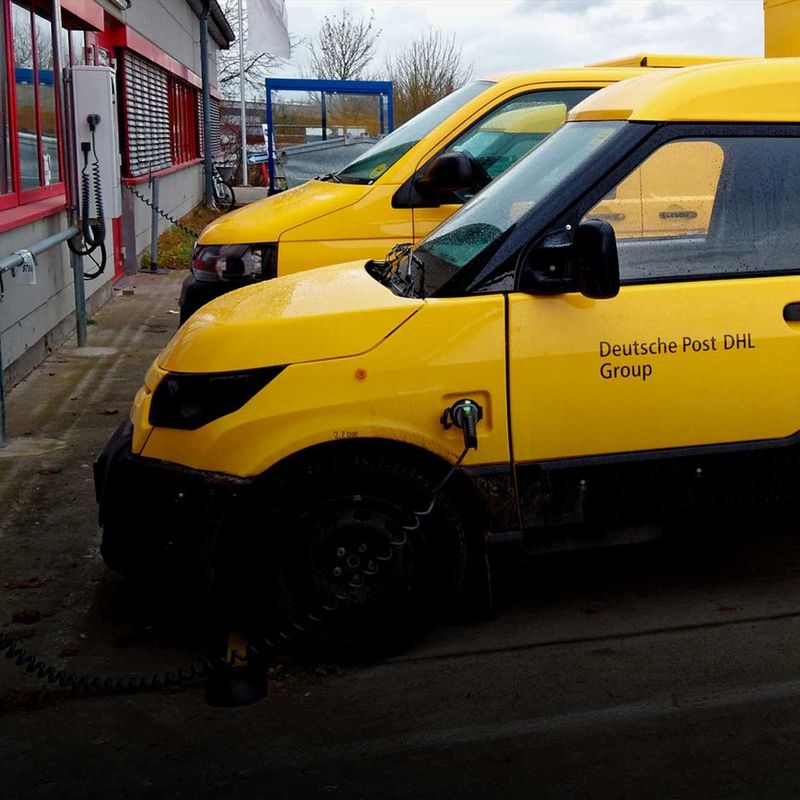6 February 2020
Nothing makes having an electric car more convenient than an electricity filling station in your own garage. When you buy an electric car, it’ll be well worth your while to install a wall box at the same time. TÜV NORD expert Christian Förster answers the most important questions about domestic charging stations.
Why bother with a wall box at all?
Today, 85 percent of all charging takes place either at home or at work. For good reason: There’s nowhere else more convenient to charge your car than those places where you spend time in any case, either during the day or overnight. While it’s true that you can charge up by plugging a special charging cable into a normal domestic socket, the cables aren’t designed for long continuous loads and charge only in single-phase at 2.3 kilowatt hours. A Renault Zoe with a 41-kilowatt battery would take up to 21 hours to charge; with a 52-kilowatt battery you’d have to allow anything up to 37 hours or more. So, your domestic socket is at best a long-term solution for plug-in hybrids, which can charge their comparatively small batteries overnight in this way. For owners of a "real" electric car, however, a wall box is the best option for daily use. The wall charging station can be installed in your garage or on your carport and, depending on the design, charges at 3.6 to 22 kilowatts and in up to three phases For this, it needs a three-phase connection, like the one which is used for electric cookers. With a charging capacity of 7.2 kilowatts, a 41-kilowatt battery will charge in less than six hours, and an 11-kilowatt equivalent in less than four; a 22-kilowatt battery will be fully charged in just two hours.
© AdobeStockCharging station for an electric vehicle with 3 different connection plugs
Which wall box with which charging capacity do I need for my electric car?
This depends, on the one hand, on the battery capacity of the car and, on the other, on the on-board charger installed in the vehicle. The latter determines the rate at which your car can charge. The current VW e-up, for example, has a 7.2-kilowatt on-board charger and can’t use the full potential charging capacity of a wall box that delivers 11 or 22 kilowatts. Surprisingly, the same is true of the Jaguar I-Pace, which, despite its huge 90-kilowatt battery, can only charge at a paltry 7.2 kilowatts when at home. Some manufacturers offer a choice of on-board chargers. Even for vehicles with larger chargers, an 11-kilowatt wall box is sufficient for domestic use. If the car is charged for seven to eight hours overnight, a charging capacity of between 5 and 7 kilowatts is enough, depending on the battery level and size – this will reduce the burden on the power grid, your own domestic circuits and the battery itself.
Some car manufacturers offer their own wall boxes. Am I then committing to using a particular car?
No, wall boxes in Europe are equipped as standard with a type 2 socket, often referred to as the mennekes. All current electric cars have this Type 2 standard. But older Asian electric vehicles with type 1 connectors can also be charged at any wall box, given the right connector.
Do I have to register the installation of a wall box?
You generally have to tell your local network operator if you’re going to install a wall box. If the charging capacity of the planned electricity station is higher than 11 kilowatts, you will need the operator’s approval. The network operator will check in advance whether the networks will be overloaded by the wall box and will in some cases have to make some technical changes, which may in turn incur costs.
What should I consider during the installation?
A wall box should only be installed by a professional. The installer will also know whether the planned wall box requires approval and will coordinate the work with the network operator.
© AdobeStock
Depending on the equipment, a wall box currently costs between 500 and 2,500 euros. As demand grows and production numbers increase, prices will in all likelihood fall somewhat in What will I have to pay for the purchase and installation of the wall box?
Depending on the equipment, a wall box currently costs between 500 and 2,500 euros. As demand grows and production numbers increase, prices will in all likelihood fall somewhat in the future. For domestic needs, however, you shouldn’t generally have to pay more than 1,000 euros. This doesn’t include connection costs or the laying of the cable from your central fuse box to the charging point by a specialist electrician. Depending on how long the cable needs to be, this can add anything up to another 1,000 euros to your bill. In any case, you’ll be well advised to go for a wall box with an integrated cable. This will make your overnight charging even faster and more convenient.
Can I get financial support to install a wall box?
The German government is currently concentrating on the promotion of public charging infrastructure. However, some states and municipalities offer subsidies for the purchase and installation of domestic chargers. Anyone who buys a private wall box in North Rhine-Westphalia will get back up to 1,000 euros, up to a maximum of 50 percent of the total cost. If you want to get funding, you’ll need to demonstrate that the job is being done by a specialist company and that you have a green electricity contract. In Munich, 40 percent of the costs for the installation and installation of the wall box will be covered up to a maximum amount of 3,000 euros. The city of Düsseldorf reimburses 20 percent of the costs up to a maximum of 500 euros for households with green electricity contracts or solar power. In general, the application and the cost estimate will first need to be approved. Only then will you be able to order the wall box and get the electrician in. Various energy suppliers also pay subsidies for wall boxes – usually coupled with an electricity contract with the supplier in question. Many funding programmes are for the short term, and new sources of funding are being introduced. If you want to buy a wall box, you should always find out about funding possibilities on the Internet, from your local authority or from the energy suppliers.
Can I install a wall box in the garage of my owner-occupier apartment block or my block of rented flats?
If you want to install a wall box in an apartment building or a shared garage, you need the consent of all the other apartment owners. Even one contrary vote can scupper the installation. Tenants, on the other hand, may only put a wall box in the garage of their apartment or business with the express consent of their landlord. Various associations, as well as car makers, have been calling for some time for changes to the laws on residential and rental property to clear away this obstacle to the purchase of electric cars. In January, the German Ministry of Justice and Consumer Protection unveiled a draft bill to amend German owner-occupied property law. According to this bill, structural measures for the construction of a charging facility should no longer require the approval of all homeowners. Instead, both owners and tenants should in principle be entitled to install a wall box and to bear the associated costs themselves. The bill has yet to be finalised and passed by the Bundestag. The Association of Property Managers, VDIV, hopes that the corresponding law will come into force in 2020.
© AdobeStockElectric car at a charging station
So what happens if I can't currently charge at home or at my workplace but still want to drive an electric car?
The charging station register of the Federal Association of Energy and Water Industries (BDEW) currently counts 24,000 public charging points in Germany, 15 percent of which are fast chargers. That's 50 percent more than a year ago. In the meantime, you can now also charge your electric car at some supermarkets, DIY stores and furniture stores while you’re out shopping. According to the German government, one million public charging points will be available in Germany by 2030. The current ratio of cars to charging points is around nine to one. Whether you’ll find a charging station near you depends on where you live. With almost 5,700 charging stations, Bavaria is the nationwide leader; with 208 chargers, Mecklenburg-Vorpommern offers fewer than twice as many charging options as the considerably smaller state of Saarland. Urban charging infrastructure is also still dogged by a common problem: the charging stations are usually set inconspicuously on the roadside, and you often get only one. If a station is defective or blocked by a normal petrol or diesel car, you’ll have to go in search of the nearest alternative. It would make sense here to visualise a future charging infrastructure in the form of larger electricity filling stations, including in conurbations. The problem of inconsiderate parking could be tackled by fines and the growing social pressure that may come with the spread of e-mobility. But there’s also another frequent source of annoyance: electric car drivers who treat charging stations as a free parking space after they’ve finished charging. This could be counteracted using intelligent charging management: once the battery is charged, an app lets the owner know. After an appropriate grace period, high fees would then be charged for outstaying your welcome – ensuring that the charging station would be free as quickly as possible for the next electric motorist.
ABOUT
© privat
Christian Förster is project manager for E-mobility at the TÜV NORD GROUP and an expert in alternative fuels and propulsion concepts at the Institute for Vehicle Technology and Mobility (IFM).
